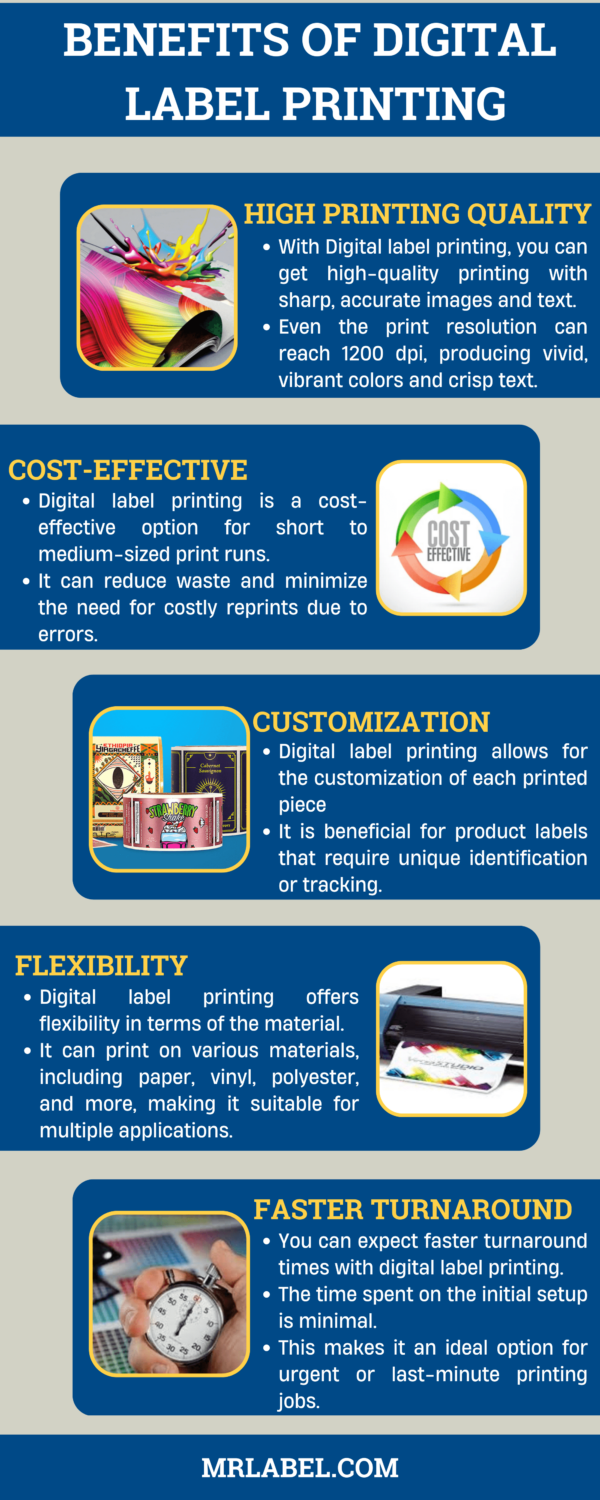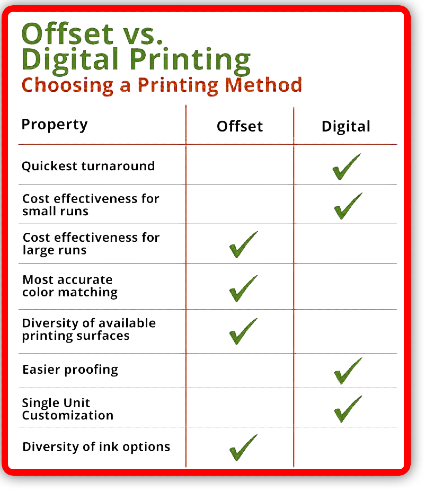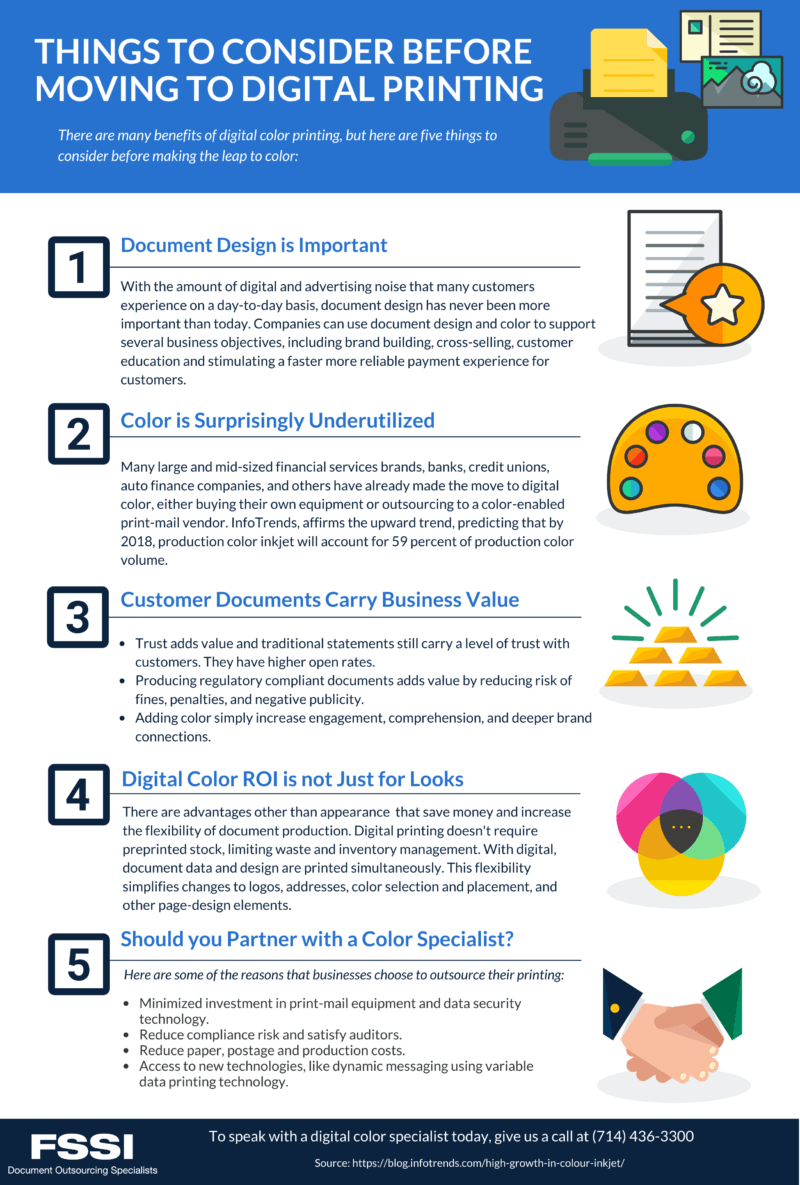9 Simple Techniques For Digital Printing
9 Simple Techniques For Digital Printing
Blog Article
Facts About Digital Printing Uncovered
Table of ContentsSee This Report on Digital PrintingThe smart Trick of Digital Printing That Nobody is DiscussingDigital Printing Fundamentals ExplainedDigital Printing Things To Know Before You BuySee This Report on Digital PrintingThe 25-Second Trick For Digital Printing
Variable information printing, such as straight mail with personalized codes and addresses, is preferably suited for digital printing. Digital fast printing just needs four actions of design, evaluation, printing and binding to obtain everything done. Digital fast printing has an unparalleled benefit: print on need.According to PMMI, digital printing permits brand names and manufacturers to respond rapidly to client needs while boosting the supply chain, reducing warehousing cost and waste, and taking pleasure in faster time to market. That all audios great, but how does this innovation do all that? The significant differentiator of these innovations is that there are no set up costs and no plates with electronic printing.
Facts About Digital Printing Revealed
According to Wikipedia, the greatest distinction in between digital printing and traditional approaches such as lithography, flexography, gravure, or letterpress - Digital Printing is that there is no demand to change printing plates in electronic printing, whereas in these analog printing approaches home plates are repetitively changed. This leads to quicker turnaround time and decreases expense when using electronic printing.
Rapid manufacturing implies obtaining your product to market faster. It additionally indicates it's simpler and faster to make changes in the future, when you change a dish, add a SKU, or develop seasonal product packaging. Digital printing is highly adaptable, so it's simple to make changes to the bundle design promptly. Everything returns to the plates.
Much more inventory can imply even more waste later on. With standard printing techniques, short-run printing is simply not possible. Since a fantastic layout can make or break your item, electronic printing regularly develops top notch, clear and colorful graphics each time. Digital printing on versatile bags adds the brilliant, lively, and exact graphics that almost beckon consumers to get to out and touch them.
Digital printing is the process of printing digital-based images directly onto a range of media substratums. There is no demand for a printing plate, unlike with offset printing. Digital files such as PDFs or desktop publishing documents can be sent out straight to the digital printing press to print on paper, picture paper, canvas, material, synthetics, cardstock and various other substratums.
Digital Printing - An Overview
According to PMMI, digital printing allows brands and makers to respond quickly to customer needs while enhancing the supply chain, lowering warehousing cost and waste, and delighting in faster time to market. That all sounds excellent, yet exactly how does this modern technology do all that? The significant differentiator of these innovations is check that that there are no set-up fees and no plates with electronic printing.
According to Wikipedia, the best distinction between electronic printing and standard techniques such as lithography, flexography, gravure, or letterpress is that there is no need to change printing plates in electronic printing, whereas in these analog printing methods home plates are repetitively replaced. This results in quicker turn-around time and reduces cost when making use of digital printing.

Unknown Facts About Digital Printing
More stock can mean even more waste down the road. With traditional printing methods, short-run printing is simply not feasible. Since a great style can make or break your product, electronic printing regularly develops top notch, clear and colorful graphics each time. Digital printing on versatile bags adds the brilliant, vivid, and accurate graphics that virtually beckon customers to connect and touch them.

According to PMMI, electronic printing permits brands and suppliers to respond swiftly to consumer demands while enhancing the supply chain, reducing warehousing expense and waste, and appreciating faster time to market. That all sounds excellent, but exactly how does this modern technology do all that? The major differentiator of these innovations is that there are no set up costs and no plates with digital printing.
The Single Strategy To Use For Digital Printing
According to Wikipedia, the best distinction in between electronic printing and typical approaches such as lithography, flexography, gravure, or letterpress is that there is no need to change printing plates in digital printing, whereas in these analog printing methods home plates are repeatedly replaced. This results in quicker turn-around time and decreases price when making use of electronic printing.
Fast production implies getting your item to market much faster. It additionally indicates it's much easier and faster to make modifications in the future, when you alter a recipe, add right here a SKU, or develop seasonal product packaging. Digital printing is very versatile, so it's simple to make changes to the package layout swiftly. Everything goes back to the plates.

The Ultimate Guide To Digital Printing
Digital printing is the process of printing digital-based photos directly onto a selection of media substrates. There is no demand for a printing plate, unlike with balanced out printing. Digital documents such as PDFs or desktop posting files can be sent see this website out directly to the electronic printing machine to publish on paper, image paper, canvas, fabric, synthetics, cardstock and various other substrates.
Report this page